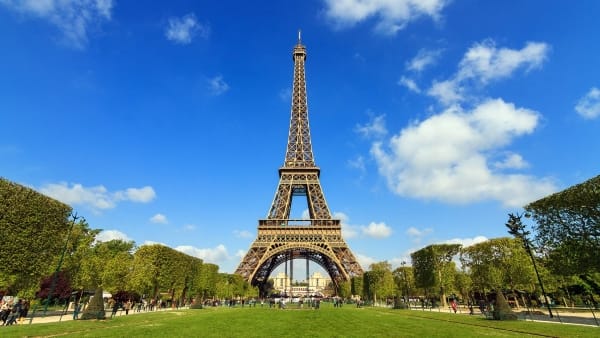France
Overview and productions
Long an attractive filming location, France has stepped up its game to accommodate a bevy of local and international productions and, increasingly, prestige French- and English-language projects for major international platforms. Increased investment to expand studio space, technology and education — combined with a boosted tax incentive and qualified crews — have helped woo major feature and audiovisual production to French soil and keep them around for complete shoots and VFX work.
International production in France has tripled from a $320m (€305m) spend in pre-pandemic 2019 to a total spend of $1.04bn (€991m) in 2022, up from $418m (€398m) in 2021. “Even in an increasingly globalised and competitive content market, France continues to attract more and more international productions,” says Pauline Augrain, who took on the role of director of digital at CNC, the National Centre for Cinema and the Moving Image, in August.
France offers the Tax Rebate for International Production (TRIP), a rebate of up to 30% of the eligible production spend to a cap of $31.5m (€30m). The rebate rises 10% when VFX expenses surpass $2.1m (€2m) spent on local soil. In 2022, 101 projects benefited from TRIP, up from 62 in 2021. Key to the surge has been an increasingly strong presence of international streamers making both features and series in French and English. Of the $1.04bn (€991m) spent in France in 2022, $787.5m (€750m) went to audiovisual production and the remaining $253m (€241m) to feature films. Audiovisual production dominates with 82% of overall investment, up from $567m (€540m) in 2021, but investment in cinema has more than doubled to $253m (€241m), up from $118.7m (€113m) in 2021.
While international productions would often shoot a few scenes or for a few days or weeks in France before moving post-production responsibilities abroad, the boosted tax credit has been a major factor in getting productions to not only come to France, but to stay. Eleven projects qualified for the 40% rebate in 2022, a colossal increase compared to three in 2021, two in 2020 and just one in 2019.
John Wick: Chapter 4 did all its VFX work in France after shooting in Paris. Netflix’s Murder Mystery 2 also spent several months shooting in Paris, even interior scenes set in Hawaii were shot at Les Studios de Paris in Saint-Denis.
Apple TV+’s Dior-Chanel drama The New Look and Franklin, about Benjamin Franklin’s time in France, both shot in the territory for several months. The latter shut down foot traffic on the Right Bank of the Seine river for several days. Emily In Paris returned for season three, with season four shooting in 2023, along with AMC’s spin-off series The Walking Dead: Daryl Dixon. Meanwhile, Anna Winger’s multilingual co-production Transatlantic shot in Marseille and completed all its VFX work in France.
“The 40% changes everything,” explains John Bernard, France-based producer and CEO at Peninsula Film. “We’re doing whole films here, not just a piece of them, and that’s changed the dynamics of how we do business.” Thanks to the incentives, he says, “France is becoming the hottest place to go to shoot. You’d be mad not to bring a whole show to France.”
Raphaël Benoliel, who spearheaded production on all four seasons of Emily In Paris along with The Walking Dead: Daryl Dixon, Murder Mystery 2, John Wick: Chapter 4 and David Fincher’s Venice title The Killer, confirms: “It’s one of the best tax credits in the world, particularly for series.”
Longtime line production powerhouses Bernard and Benoliel continue to lead the on-the-ground scene, but more and more local producers with strong savoir faire such as Thomas Buchwalder of Cactus Films, who worked on Netflix’s Transatlantic, are multitasking as line producers on major projects. Haut Et Court line produced Monsieur Spade, a drama series from The Queen’s Gambit co-creator Scott Frank, that shot entirely on location in France.

Gallery
Locations
There is a wealth of locations available for filmmakers -- from cobbled streets, fountains and stylish cafes of the capital, to old-world villages like Saint-Antonin-Noble-Val.
Local locations professionals see this investment in infrastructure and training, combined with the extra 10% for VFX work in the TRIP, as a game changer for the country in attracting international productions to do more than just locations work.
Crew and infrastructure
France offers more than 20,000 shooting locations, heritage sites and qualified crews in addition to studio facilities, digital labs and VFX houses. A $2.1bn (€2bn) national investment plan through 2030 continues to fund construction of soundstages, virtual and physical production, VFX and animation, and education for industry trades to ensure qualified crews.
Productions benefiting from the TRIP work directly with Film France By CNC and local film production service companies such as Peninsula, Firstep or Cactus Films among dozens of others that handle location scouting, hiring crews, work permits, locking in studio facilities and more. Les Studios de Paris is the largest soundstage complex in the Paris area with 102,000 square feet, and Studios de Bry-sur-Marne is also among the biggest in France with 40,000 square metres, a backlot and several sets and stages. Provence Studios in Martigues has 22 acres, backlots and film sets.
Travel and logistics
France is the largest country in the EU by surface area and boasts great air, train and motorway travel. London and Brussels are quick train rides away. Les Studios de Paris is a 30-minute car, taxi or metro ride from the centre of Paris. A high-speed train from the capital to Marseille and the Studios de Provence takes three hours. Shooting in France also extends to overseas territories such as Guadeloupe, Martinique, Reunion Island and New Caledonia.
First people to contact
Film France: filmfrance@cnc.fr
Sign up for newsletter
Newsletter